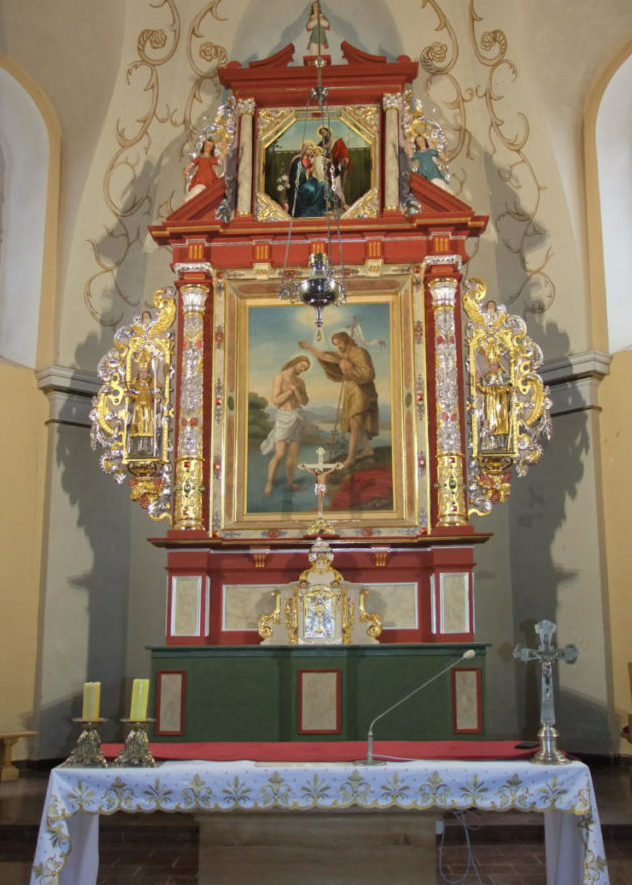
Church of st. John the Baptist in Rozdrażew
RENOVATION OF THE MAIN ALTAR FROM THE CHURCH OF ST. JOHN THE BAPTIST IN ROZDRAŻEW
The mannerist main altar from the church of St. John the Baptist in Rozdrażew was made in the beginning of the 17th century. The condition of the altar was very bad due to numerous plastic modifications which it had undergone in the past as well as physical and biological damaging factors. The ongoing destruction of the structure of wood and woodcarved elements of the altar was caused mainly by activity of xylophages. It contributes to the weakening of mechanical strength of the woodcarved elements and the reredos. Damage caused by mechanical destruction, e.g. by chipped fragments of woodcarved decorations could be noticed. The altar was repainted, cracks and flecks of paint with mortar, especially in the places were connections loosened. There were dirt and stains on the surface.
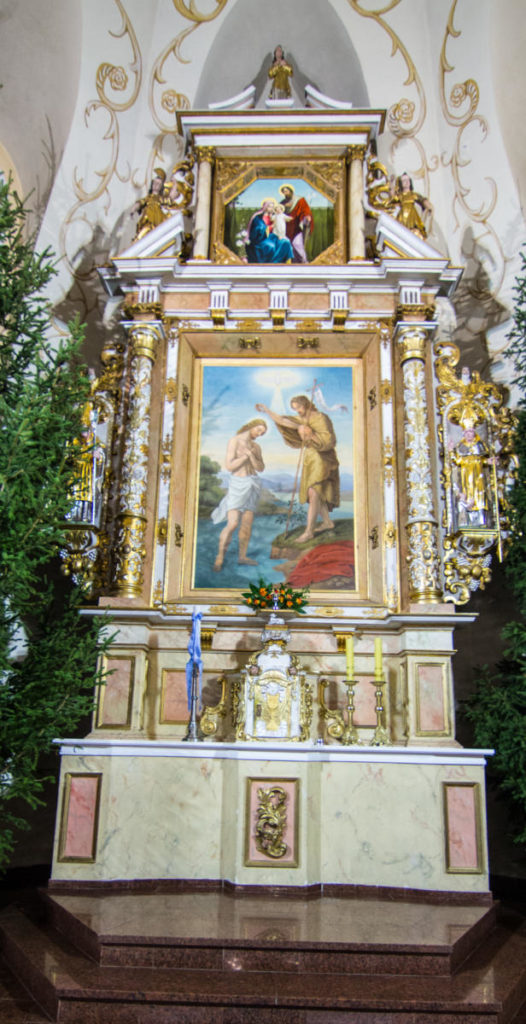
The aim of conservation works was a complete technical and aesthetic conservation of the object. The main premiss was the restoration of the proper artistic significance which would correspond to the original aesthetics in the highest degree.
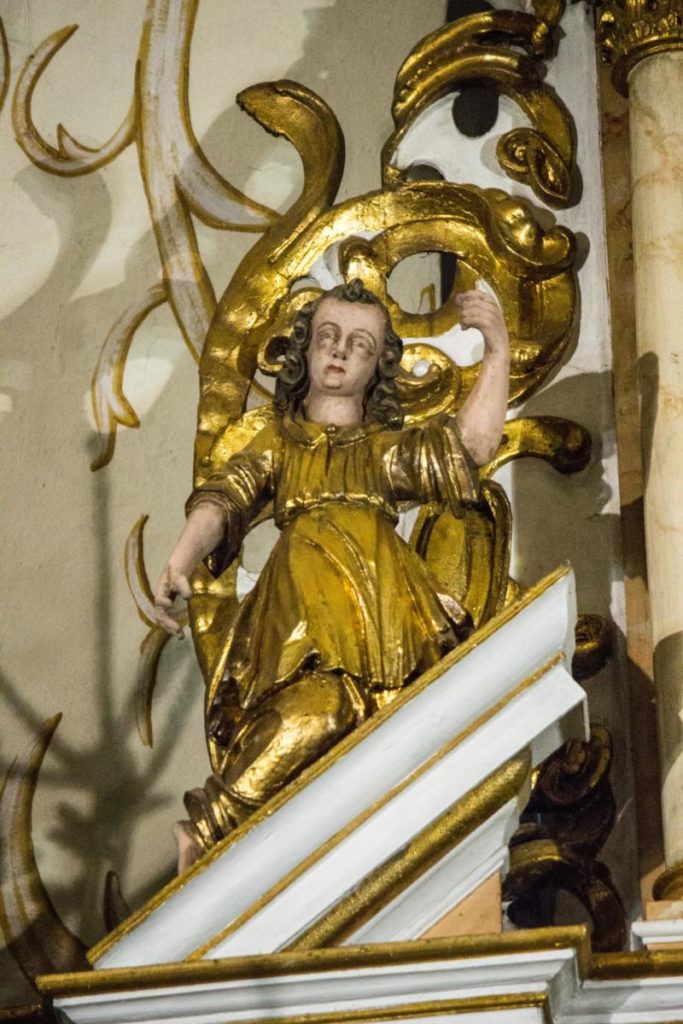

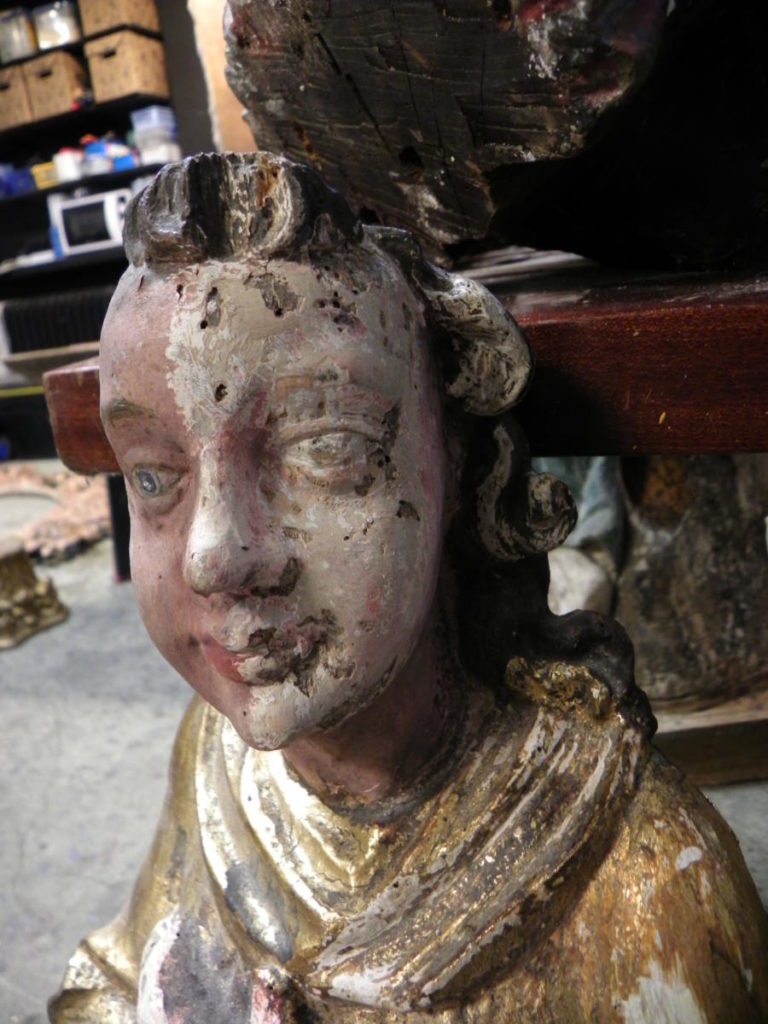
Before the proper renovation works, photographic documentation was done, and then the altar was disassembled, catalogued, particular elements were secured and transported to the workshop. Stratigraphic and chemical tests were conducted in order to identify colouring agents and seams. Renovation started with cleaning of the object’s face and the back from loose contamination. The back of the wooden elements was cleaned chemically with the use of detergent and turpentine. Then wood was disinfected and its structure was impregnated. By mechanical and chemical ablation of the repaint, the original paint layer was uncovered.
Unoriginal gilding was also removed and the uncovered original one made in gold leaf technique was cleaned. Then defective fillings of mortar and wood were removed. Selected elements of construction were reinforced, cracks of the connections between woodcarved elements were cleaned, fixed and glued. Some elements of the woodcarving were reconstructed and smaller losses of wood filled with epoxy resin-based putty. Next, the losses of mortar were filled and the new ones were applied on prepared wooden elements. Bole was filled and the gilding and silvering reconstructed with leaf in adhesive technique. Surfaces of putties were isolated with shellac in the part of polychromy.

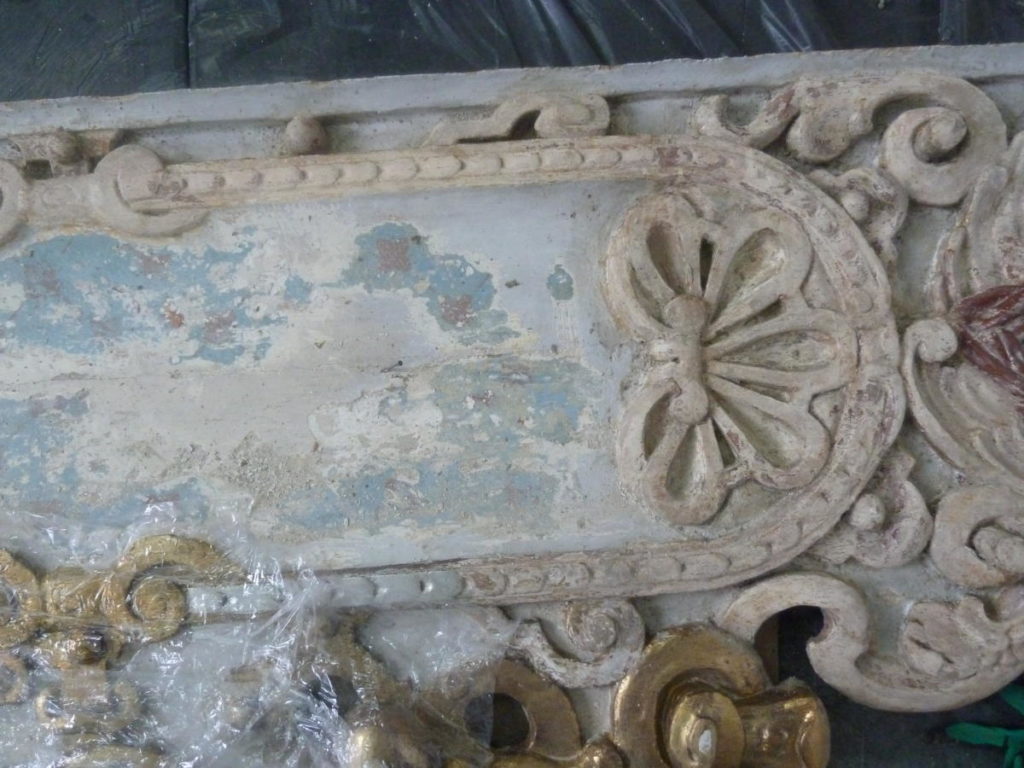

Also canvas paintings were renovated. Firstly, they were cleaned from dirt and dust, the dirty varnish which had gone dark and partly matt, was ablated. Repainting was removed chemically and mechanically. Then the canvas was stretched on the guarding table to remove folds and to integrate the cracked layer of paint with the ground and with canvas support. Next, the losses of ground were filled with coloured emulsion putty. The painting was placed on new stretchers and retouch varnish was applied. Lastly, the layer of paint was stippled with a unifying method with oil paint. After six months since the filling of losses of paint, finishing varnish was applied.
When the renovation works were completed, the paintings were mounted in the altar and the photographic and descriptive documentation was made.
